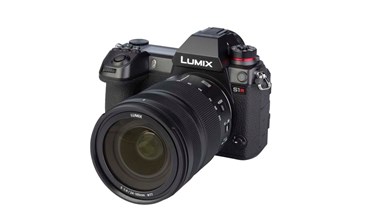Panasonic LUMIX S1R review
46.7MP effective resolution. Priced at $5999.

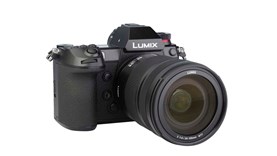

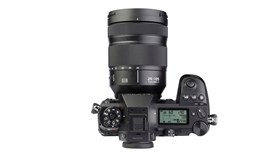

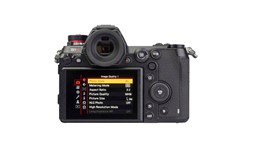
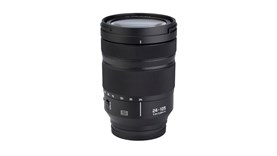
Good points
Bad points

Unlock our expert review and more
- Reviews and ratings you can trust
- Easy side-by-side comparison
- Recommended products at a glance
-
Recommended
View more details.
Cameras must have an overall score of 80% or more and at least 70% for image quality in auto mode to make it into this list. Cameras in the table with overall scores between 70–79% are still good performers and worth considering, particularly if they fit your budget.
-
CHOICE Expert Rating
View more details.
The overall score is made up of: image quality – auto and manual (50%), ease of use (30%), movie quality (10%), and monitor/viewfinder (10%).
-
Picture quality score – auto mode
View more details.
Cameras are set to full automatic function, including exposure, white balance and focus function, with the maximum resolution and image quality setting in JPEG.
-
Picture quality score – manual mode
View more details.
Picture quality is evaluated after the photos are transferred to a PC.
-
Ease of use score
View more details.
We assess start-up speed, the menu system, controls and the insertion and removal of the storage cards.
-
Movie quality score
View more details.
Subjects in colourful clothes are shot at rest and in motion. The camera is on a tripod, with autofocus and auto white balance on, and footage alternates between pan and zoom.
-
Monitor/viewfinder score
View more details.
Both monitor and viewfinder (if available) are considered.
-
Flash score
View more details.
Images are checked across varying distances for amount of light, evenness, flatness, distribution of light and whether the flash can automatically adapt to the distance from the subject.
-
Availability
View more details.
'Tested model' refers to cameras that are currently available in shops and online. 'Discontinued model' refers to cameras that are no longer available in shops, but may be available second-hand.
- Tested model
-
Price
View more details.
Recommended retail price, as provided by the manufacturer.
- $5999
- Lens
- Lumix S 24-105mm 1:4 Macro O.I.S.
-
Zoom range (mm)
View more details.
Refers to the level of zoom built into the lens. It's measured in millimeters (mm), because it refers to the physical distance between your camera's sensor and the point of convergence on the lens. The numbers, e.g. 24-70mm, indicate the maximum width and zoom available. This column only refers to optical zoom, which is lens components physically moving to increase or decrease magnification, like a telescope.
- 24 - 105
-
Lens factor
View more details.
This is magnification calculated by dividing the longest zoom setting by the shortest zoom setting.
- 4.4
-
Minimum aperture range (f-stops)
View more details.
This is the manufacturer's stated minimum aperture range in f-stops, wide to telephoto.
- 4
-
Minimum shutter speed (secs)
View more details.
Measured in seconds.
- 1/8000
-
Maximum shutter speed (secs)
View more details.
Measured in seconds.
- 60
-
Lens diameter (mm)
View more details.
Measurement required when buying lens filters.
- 84
- Lens length (mm)
- 139
- Lens weight (g)
- 717
- Lens filter thread (mm)
- 77
-
Lens mount
View more details.
Notes which lens brands and types are accepted by the camera by default. You may be able to mount additional lenses using a converter. These are typically sold separately.
- Panasonic L
-
Sensor type
View more details.
The sensor converts light to a digital image. Different sensors have different effects on the picture as it's processed (e.g. colour, tone, hue, saturation). Though there are different brands and models, some competing camera manufacturers use the same sensors.
- CMOS
-
Sensor size
View more details.
36mm x 24mm is the approximate size of a full-frame sensor.
- 36 x 24
-
Effective resolution (MP)
View more details.
Measured in megapixels, based on the effective resolution, using a standard that is generally accepted to provide a reasonable indication of the maximum number of pixels the camera uses to create an image.
- 46.7
-
Dimensions (mm, WxHxD)
View more details.
For fixed-lens cameras the lens is retracted if possible.
- 149 x 110 x 97
-
Weight (g)
View more details.
Body only for system cameras.
- 1075
- Tripod socket
- Metal (centred)
-
Start-up time (sec)
View more details.
Measured from camera off until the first frame is shot.
- 1.3
-
Shutter delay 1m (sec)
View more details.
Shutter delay when the target is one metre from the camera. The camera is on, but focused at infinity.
- 0.06
-
Shutter delay 8.5m (sec)
View more details.
Shutter delay with the target at 8.5m. The camera is on, but focused at infinity.
- 0.18
-
ISO rating
View more details.
ISO relates to the camera's sensitivity to light. The higher the ISO, the greater the sensitivity, and the less light required to produce a well-lit image in dark environments. However, high ISOs have more image noise (grain) and less accurate colours. Noise reduction tech in newer cameras can negate some of these problems.
- 200 - 25600
-
Exposure correction (lower)
View more details.
Used to automatically alter photos beyond the exposure suggestion of the camera to make them brighter or darker. Often called exposure compensation. Measured in EV units, 1 EV equals one exposure stop (or steps). Negative range shows the number of stops the camera can go below the recommended exposure. Adjustment range in stops.
- -5
-
Exposure correction (higher)
View more details.
Used to automatically alter photos beyond the exposure suggestion of the camera to make them brighter or darker. Often called exposure compensation. Measured in EV units, 1 EV equals one exposure stop (or steps). Negative range shows the number of stops the camera can go below the recommended exposure. Adjustment range in stops.
- 5
-
Continuous shooting mode
View more details.
Indicates the number of shots possible before the camera's buffer is full. Continuous shooting will stop at this point.
- 8.2
-
Frame limit in continuous mode
View more details.
Maximum number of simultaneous photos the camera can take in continuous shooting mode.
- 1000
-
Number of selectable exposure programs
View more details.
These preset modes adjust camera settings (like ISO and shutter speed) for certain situations. Modes or icons you may see indicate settings for portrait shots, macro, landscape, low-light or party mode.
- 14
-
Closest focus wide (m)
View more details.
Minimum distance required to keep the subject in focus at wide angles. Moving closer will cause the image to lose focus.
- 0.3
-
Closest focus tele (m)
View more details.
Minimum distance required to keep the subject in focus at zoom angles. Moving closer will cause the image to lose focus.
- 0.3
-
Closest focus macro (m)
View more details.
Minimum distance required to keep the subject in focus using macro mode. Moving closer will cause the image to lose focus.
- 0.3
-
Focus points (auto mode)
View more details.
Total number of active focus points available when shooting in auto-mode. Auto-focus does not allow you to select specific focus points.
- 225
-
Monitor size (mm)
View more details.
Size of the screen on the rear of the camera.
- 67 x 45
-
Monitor ratio
View more details.
Aspect ratio of the screen on the rear of the camera. Most are in 4:3 or 16:9 widescreen format.
- 3:2
-
Monitor swivel (V x H, deg)
View more details.
Ability to raise, lower, swivel and adjust the screen on the back of the camera in various directions. Useful for reviewing images in bright environments and taking selfies. Vertical x horizontal, degrees.
- 135 x 60
-
Viewfinder type
View more details.
There are two types of viewfinders. Optical (OVF) shows the environment through the lens by bouncing light off the camera's mirror. Electronic (EVF) is essentially a miniature version of the screen on the back of the camera. It usually includes similar features such as preview mode, which can show what the final image will look like based on ISO, aperture and more.
- Electronic viewfinder
-
Viewfinder diopter
View more details.
Adjustable viewfinder to accommodate various types of eyesight strength. This can be useful for shooting in focus without glasses.
- -4 x 2
-
Video ratios supported
View more details.
Most cameras film in traditional 4:3, and 16:9 widescreen mode.
- 16:9
-
Video format
View more details.
List of output formats available. This is important information as most editing programs, media players and websites only support certain video formats. Formats also have their own pros and cons, such as image quality and compression methods.
- mp4 (codec AVCHD, MP4/H.264)
-
Maximum frame rate – progressive
View more details.
The maximum progressive frame rate possible in video mode. ns= not stated; na = not applicable.
- 60
-
Number of selectable exposure programs - video
View more details.
These preset modes adjust camera settings (like ISO and shutter speed) for certain situations. Modes or icons you may see indicate settings for close-up shots, low-light and indoor events.
- 4
-
Audio recording format
View more details.
Does the camera record single channel (mono) or two-channel (stereo) audio when capturing video?
- Stereo
-
Memory card type
View more details.
Cameras will only work with the memory cards listed for each model. Some models support multiple card types.
- XQD (UHS-II) + SDXC
-
Internal memory (MB)
View more details.
Some cameras come with a small amount of inbuilt memory that can store a handful of images. This is typically found on cheap, entry-level models.
- None
- Number of memory cards - insertable
- 2
-
Image ratios supported
View more details.
List of ratios (e.g. 4:3, 16:9) that the camera can photograph in. Most cameras support multiple ratios.
- 3:2, 4:3, 16:9
-
Flash type
View more details.
Built-in, pop-up or external. Some will automatically pop up when the camera is in auto mode, while others require manual release even when in auto mode. All flash types can be turned off if required.
- basic
-
Battery type
View more details.
Cameras with removable batteries have a few advantages including the freedom to carry fully-charged backup batteries and the option to replace one when it permanently dies. The number of required batteries is shown in brackets.
- Li-Ion (1)
-
CIPA battery cycles
View more details.
A measure of how many photos you're likely to be able to take with freshly charged or new batteries. This is reported by the camera manufacturer and measured according to the international Camera and Imaging Products Association (CIPA) standard for digital camera battery testing.
- 360
-
Image editing software
View more details.
Whether the camera comes with image editing software.
- PHOTOfunSTUDIO 10.1 PE (WIN)
-
Video editing software
View more details.
Whether the camera comes with video editing software.
- LoiLoScope (Win) (30 days trial version)
-
RAW converter software
View more details.
Whether the camera comes with software that converts RAW images to other formats such as JPG or PNG.
- SILKYPIX Developer Studio SE (WIN/Mac)
-
Fully manual mode
View more details.
Does the camera allow full manual control over all functions, like shutter speed, ISO and white balance?
- Yes
-
Water/dust resistant
View more details.
Some models make claims for water or dust resistance.
- Yes
-
GPS tagging
View more details.
Camera has an inbuilt GPS that can add location data to the photo.
- No
- Electric cable release
- Yes
-
Camera controlled via USB
View more details.
Ability to control the camera using a remote USB device, or via software when tethered to a computer.
- No
-
Manual white balance
View more details.
Does the camera include full manual control over white balance settings (excluding pre-sets)?
- Yes
-
Bulb setting
View more details.
Keeps the shutter open for as long as you press the shutter button.
- Yes
-
Priority mode – shutter speed
View more details.
The camera will select the highest shutter speed possible in the conditions.
- Yes
-
Priority mode – aperture
View more details.
The camera will prioritise aperture over shutter speed in the conditions.
- Yes
-
Shutter release via touch screen
View more details.
Can you take a photo by tapping the touch screen?
- Yes
-
HDR function
View more details.
High Dynamic Range. Takes three photos of varying exposures, then combines them to produce an image with an increased colour range and luminosity.
- Yes
-
Time lapse
View more details.
The camera takes one photo at a specified interval for a given period (e.g. one shot per second for 20 minutes). These can be combined to make a time lapse video using special software.
- Yes
-
Panorama (panning)
View more details.
A panorama (very wide image) is made by panning the camera across a scene. This is useful when shooting landscapes.
- No
-
Image stabilisation - physical
View more details.
Either the lens elements or the sensor move to compensate for camera shake.
- Optical
-
Electronic image stabilisation
View more details.
The camera increases ISO and fully opens the aperture to compensate for camera shake.
- Yes
-
Focus assist lamp
View more details.
Some cameras project light for an inbuilt lamp to assist auto-focus mode in low-light environments.
- Yes
-
Focus via touch screen
View more details.
Can the camera auto-focus correctly when the subject is tapped on the touchscreen?
- Yes
-
Continuous manual focus switchable
View more details.
Ability to override auto focus without turning off the feature completely. Brands often use slightly different terms for this such as full-time manual focus (FTM).
- Yes
-
Face detection
View more details.
A feature that tells the camera to automatically detect, and focus on, faces. Some can also automatically fire the shutter when a face is detected.
- Yes
-
Spot focus
View more details.
Exposure based on a specific spot, also known as spot metering.
- Yes
-
Focus tracking
View more details.
The camera can continually track and keep a moving subject in focus.
- Yes
-
Focus bracketing
View more details.
The camera automatically takes a number of photos at different focus distances then combines them to give a greater depth of field than you can achieve using aperture settings on a single shot. Also known as focus stacking. This is particularly useful in macro photography.
- Yes
-
Touchscreen
View more details.
Does the screen on the back of the camera respond to touch input?
- Yes
- Monitor grid guide
- Yes
- Video face detection
- Yes
-
Video spot focus
View more details.
While the default exposure metering option for a basic camera in video mode generally determines the exposure for a whole scene, you can choose to be more precise and force the camera to follow a subject that you've chosen.
- Yes
- Video focus tracking
- Yes
- Manual focus video
- Yes
- Continuous to manual focus switchable - video
- Yes
-
Slow motion setting
View more details.
Can the camera film in slow motion?
- Yes
- Stop motion setting
- Yes
- Video image stabilisation
- Yes
-
Built-in speaker
View more details.
Some cameras have an inbuilt speaker that activates during video playback.
- Yes
- Socket for external microphone
- Yes
-
Can add a comment to a still image
View more details.
Ability to tag photo, which can be a useful way of recording related information such as location or mood.
- No
-
Can record in RAW format
View more details.
RAW is the digital version of a film negative. Shooting RAW gives you many more editing options in post processing.
- Yes
-
RAW plus JPEG format
View more details.
Can simultaneously duplicate and process a single image in RAW and JPEG formats.
- Yes
-
Flash slow sync
View more details.
A setting that tells your camera to shoot with a low shutter speed while firing the flash. This can deliver interesting results – the flash can freeze the subject while the rest of the photo is blurred, or the flash can expose the subject while the slow shutter speed lets in different coloured ambient light from the surroundings, for example.
- Yes
-
Flash power adjustable
View more details.
The ability to increase or decrease the brightness of the flash.
- Yes
-
Hotshoe
View more details.
A slot on top of the camera that allows you to mount an external flash that can communicate with the camera. It can also be used as a mount point for battery-powered lights and microphones when filming.
- Yes
-
Other flash connection
View more details.
Ports in addition to the hotshoe which support and power an external flash.
- Yes
-
HDMI connection
View more details.
An inbuilt HDMI output, which is typically used for viewing photos or video on a large screen directly from the camera.
- Yes
-
Wi-Fi WLAN connection
View more details.
This gives you the ability to transfer files over a wireless network.
- Yes
-
Charge via USB
View more details.
Can you charge the battery in the camera via USB?
- Yes
-
Adapter for charging batteries
View more details.
Does the camera come with an external battery charger?
- Yes
-
Separate battery holder
View more details.
Whether a case is supplied for carrying a backup battery.
- Yes
- Lens bag supplied
- Yes
- Lens hood supplied
- Yes
-
Shoulder belt supplied
View more details.
Whether the camera includes an optional strap for slinging it over your shoulder.
- Yes
-
Other items supplied
View more details.
- 2 x USB cable, lenscap, rear lenscap, bodycap, hot shoe cover, sync terminal cover

